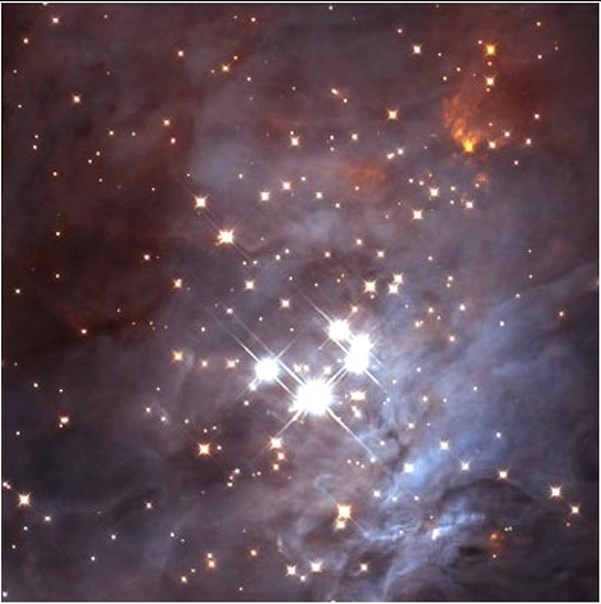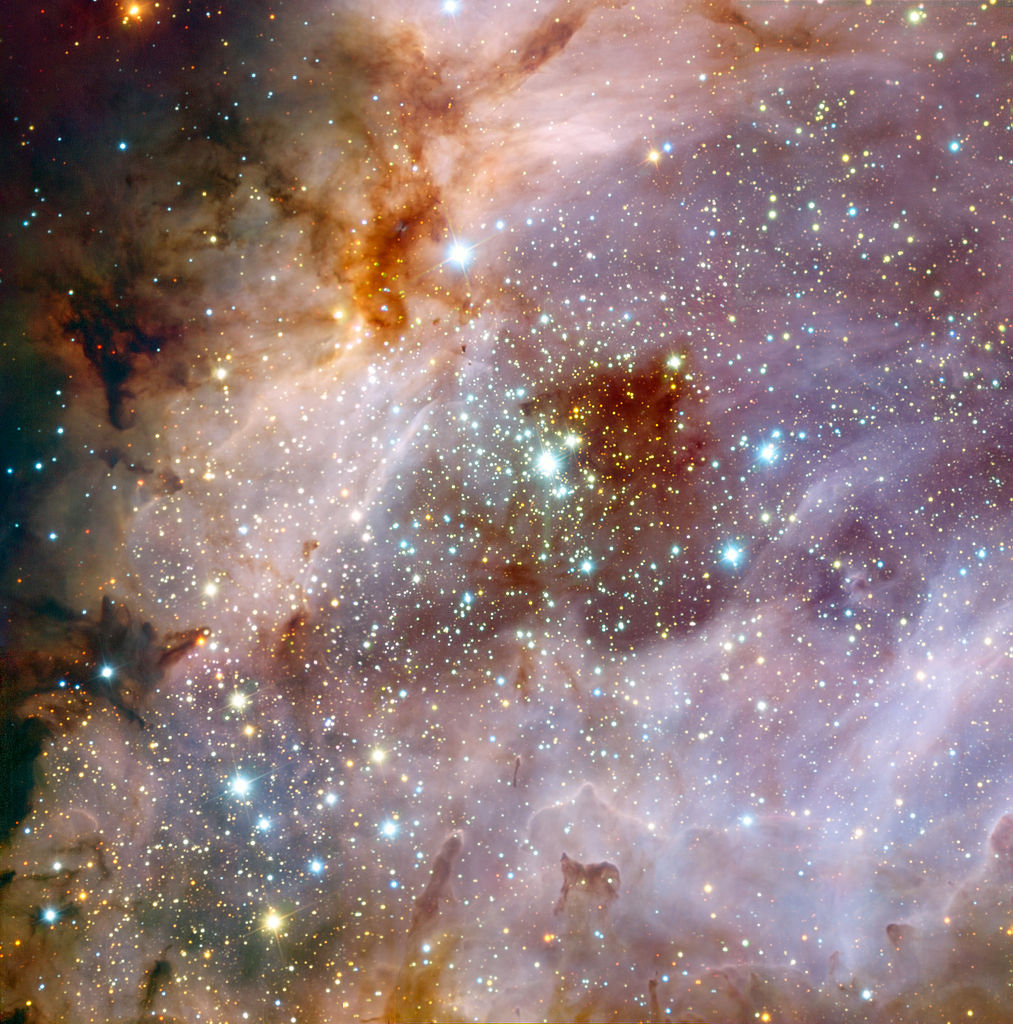Ann wrote: ↑Thu Aug 29, 2024 9:21 am
AVAO wrote: ↑Thu Aug 29, 2024 8:10 am
APOD Robot wrote: ↑Thu Aug 29, 2024 4:05 am
 Star Factory Messier 17
Explanation:
Star Factory Messier 17
Explanation: A nearby star factory known as
Messier 17 lies some 5,500 light-years away in the nebula-rich constellation
Sagittarius. At that distance, this 1.5 degree wide field-of-view would span about 150 light-years. In
the sharp color composite image faint details of the region's gas and dust clouds are highlighted with narrowband image data against a backdrop of central
Milky Way stars. The stellar winds and energetic radiation from hot, massive stars already formed from M17's stock of cosmic gas and dust have slowly carved away at the remaining interstellar material, producing the nebula's cavernous appearance and the undulating shapes within. A popular stop on telescopic tours of the cosmos,
M17 is also known as the Omega or the Swan Nebula.
Star formation around CEN 1 seems to be going intensely. Also nice in IR ...
Credit original data: NASA/ESA (SST) jac berne (flickr)
Great pictures, Jac! There is a little group of stars there that almost looks like the Trapezium in Orion!
Trapezium like cluster in M17 NASA ESA SST jac berne.png
Trapezium Cluster in M17?

- Trapezium Cluster in M42. Image: NASA; K.L. Luhman (Harvard-Smithsonian Center for Astrophysics, Cambridge, Mass.); and G. Schneider, E. Young, G. Rieke, A. Cotera, H. Chen, M. Rieke, R. Thompson (Steward Observatory, University of Arizona, Tucson, Ariz.)
Ann
TanX Ann
Cool. I think you hit the nail on the head with your comparison,
even if in that case one star in particular (CEN 1) is more dominant.
Jac
Original data: NASA/ESA Composit Herschel, GLIMPSE & CHANDRA jac berne (flickr)
Astronomers using data from ESO’s Very Large Telescope (VLT), at the Paranal Observatory in Chile, have made an impressive composite of the nebula Messier 17, also known as the Omega Nebula or the Swan Nebula. The painting-like image shows vast clouds of gas and dust illuminated by the intense radiation from young stars. The image shows a central region about 15 light-years across, although the entire nebula is even larger, about 40 light-years in total. Messier 17 is in the constellation of Sagittarius (the Archer), about 6000 light-years from Earth. It is a popular target for amateur astronomers, who can obtain good quality images using small telescopes.
These deep VLT observations were made at near-infrared wavelengths with the ISAAC instrument. The filters used were J (1.25 µm, shown in blue), H (1.6 µm, shown in green), and K (2.2 µm, shown in red). In the centre of the image is a cluster of massive young stars whose intense radiation makes the surrounding hydrogen gas glow. To the lower right of the cluster is a huge cloud of molecular gas. At visible wavelengths, dust grains in the cloud obscure our view, but by observing in infrared light, the glow of the hydrogen gas behind the cloud can be seen shining faintly through. Hidden in this region, which has a dark reddish appearance, the astronomers found the opaque silhouette of a disc of gas and dust. Although it is small in this image, the disc has a diameter of about 20 000 AU, dwarfing our Solar System (1 AU is the distance between the Earth and the Sun). It is thought that this disc is rotating and feeding material onto a central protostar — an early stage in the formation of a new star. Credit: ESO/R. Chini
 Star Factory Messier 17
Star Factory Messier 17




